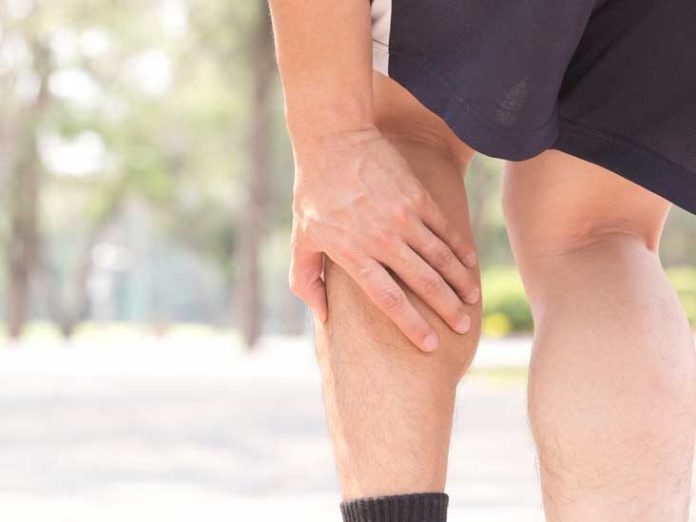Leg pain is a common problem, and can range from mild and annoying to severe and debilitating. In severe forms, it can affect your ability to walk or stand.
There are many possible causes of leg pain, from muscle injuries to problems with blood vessels. In some cases, leg pain can be caused by nerve problems in your spine.
Causes and Risk Factors of Leg Pain
- Arthritis
- Baker’s cyst
- Bone cancer
- Bone fracture
- Bursitis
- Chronic exertional compartment syndrome
- Claudication
- Deep vein thrombosis (DVT)
- Gout
- Growing pains
- Hamstring injury
- Herniated disk in spine
- Legg–Calvé–Perthes disease
- Ligament injury
- Meralgia peresthetica
- Muscle cramps
- Muscle strain
- Osgood–Schlatter disease
- Osteomyelitis (bone infection)
- Peripheral artery disease (PAD)
- Peripheral neuropathy
- Sacroiliitis
- Sciatica
- Shin splints
- Spinal stenosis
- Sprains
- Tendinitis
- Thrombophlebitis
- Torn meniscus
- Varicose veins
The following factors are known to increase the risk of developing some common forms of leg pain:
- Older age
- Dehydration
- Pregnancy
- Diabetes
- Being overweight or obese
- Nerve disorders
- Blood clotting disorders
- Injury or surgery
- Prolonged bed rest
- Sitting for extended periods
- Smoking
- Alcohol abuse
- Athletic activity, especially contact sports
How Is Leg Pain Diagnosed?
If your leg pain is severe or interferes with your daily life, it’s important to see a doctor for diagnosis and treatment. Your doctor will ask you about your symptoms and perform a physical exam.
Your doctor may also order imaging and other tests, including the following:
X-ray This test creates images of dense structures, such as bones.
Magnetic resonance imaging (MRI) This test uses a magnetic field and radio waves to create detailed images of areas of your body. These are often needed when detailed pictures of soft tissues and ligaments around the leg joints or back are needed.
Ultrasound This test uses sound waves to produce images of structures in your body, and can be useful to diagnose conditions affecting soft tissues, such as Achilles tendinitis.
Computed tomography (CT) scan This test combines many X-ray images to create a very detailed cross-section of structures. This test is good for larger surveys of the body and is cheaper and often faster than MRI. Unlike MRIs, CT scans use small amounts of radiation.
Venography This test involves injecting a dye into a vein in your leg and using X-ray imaging to detect blood clots.
Electromyography (EMG) This test involves inserting a needle electrode into muscles to measure their electrical activity, which can help detect damage to nerves leading to muscles.
Blood tests Your doctor may want to look for markers of inflammation, blood clotting, nutritional deficiencies, immune system abnormalities, diabetes, cholesterol, and other things that could be leading to your leg pain.
Prognosis of Leg Pain
How much your leg pain interferes with your life, and how long it lasts, depends on the underlying condition.
Some types of leg pain, especially if they’re caused by a muscle strain or another less serious injury, may respond well to self-care measures and not require extensive treatment.
Treatment and Medication Options for Leg Pain
- Rest your leg(s) as much as possible
- Apply an ice pack for 15 to 20 minutes, three times a day
- Elevate your leg when sitting or lying down
- Use an over-the-counter pain relief medication
When to See a Doctor
It’s a good idea to see a doctor for leg pain if it gets worse with walking, involves swelling, or if it doesn’t get better after a few days of home treatment.
It’s important to see a doctor quickly if any of the following are true:
- There are signs of possible infection (such as redness, warmth, or a fever)
- Your leg is swollen and pale or unusually cool
- You have calf pain after a period of prolonged sitting
- You have swelling in both legs along with breathing problems
- Any serious pain develops suddenly
While leg pain usually isn’t a medical emergency, you should seek immediate medical attention if any of the following applies to your pain:
- You’re unable to walk or stand
- You develop pain, swelling, redness, or warmth in your calf
- You have a sudden injury with a deep cut or exposed tissue
- You heard a pop or grinding sound when you injured your leg
Medication Options
Common over-the-counter medications to help relieve leg pain include acetaminophen and nonsteroidal anti-inflammatory medications (NSAIDs), such as aspirin or ibuprofen.
Physical Therapy
If your leg pain is caused by an injury or a condition resulting in muscle weakness, you may benefit from seeing a physical therapist.
A physical therapist can teach you personalized stretches and exercises to help you regain strength and range of motion, and even to help certain types of injuries heal.
Surgery
Some health conditions that cause leg pain may ultimately require surgery, including the following:
- Achilles tendinitis or torn tendon
- Bone fracture
- Neuropathy caused by physical pressure
- Sacroiliitis
- Arthritis of the knee
Alternative and Complementary Therapies
Certain dietary supplements may be beneficial in managing leg cramps or neuropathy. Talk to your doctor about the risks and possible benefits of taking any supplements.
Other alternative therapies that may help with leg pain include:
- Acupuncture
- Massage
- Hypnosis
- Biofeedback
- Relaxation training
Prevention of Leg Pain
While not all forms of leg pain can be prevented, some of the most common conditions that cause leg pain often respond to preventive measures such as the following:
Increase activity gradually Don’t jump into a high-intensity exercise routine. Instead, work up to a higher intensity level to avoid injury.
Mix up your exercise Don’t do the same kind of exercise over and over, day after day. A varied exercise routine is less likely to cause injury.
Wear supportive shoes Make sure your exercise shoes have enough heel cushioning and arch support.
Stretch regularly Leg stretches may help avoid cramps, and stretching your calf muscles, in particular, can help prevent Achilles tendinitis.
Build bone strength Consuming enough calcium-rich foods and vitamin D may help prevent bone fractures.
Stay hydrated Getting enough fluids may help you avoid leg cramps.
Maintain a healthy weight and don’t smoke These lifestyle factors can help prevent cardiovascular problems affecting your legs.
Don’t sit still for too long Sitting for extended periods can increase the risk of blood clots in your legs.
Research and Statistics: How Many People Have Leg Pain?
Since leg pain has so many possible causes, there isn’t much reliable data on how widespread it is. But there are rough estimates of the prevalence of several health conditions that can cause leg pain.
Resources We Love
The following organizations offer information and support for people with leg pain and related disorders.
American Association of Neuromuscular & Electrodiagnostic Medicine
This medical association is dedicated to advancing treatment of neuromuscular and musculoskeletal conditions. Its website contains information on numerous disorders, including peripheral neuropathy and sciatica.
American Academy of Orthopaedic Surgeons
This group, representing surgeons who specialize in the musculoskeletal system, provides information on specific disorders affecting the legs — including fractures, ligament injuries, deep vein thrombosis (DVT), and arthritis.
Arthritis Foundation
This leading arthritis research and advocacy organization provides information on joint conditions affecting the knees and legs, and also has detailed resources on managing pain.
American Chronic Pain Association
This group, which performs advocacy and research on chronic pain conditions, offers resources for managing leg pain, including tips on self-management skills, trips to the emergency room, and relaxation exercises.
Additional reporting by Quinn Phillips.
Editorial Sources and Fact-Checking
- Leg Pain. Mayo Clinic. January 11, 2018.
- Muscle Cramp. Mayo Clinic. January 3, 2019.
- Achilles Tendinitis. Mayo Clinic. September 27, 2019.
- Broken Leg. Mayo Clinic. July 1, 2020.
- Deep Vein Thrombosis (DVT). Mayo Clinic. March 6, 2018.
- Peripheral Neuropathy. Mayo Clinic. May 22, 2019.
- Sacroiliitis. Mayo Clinic. December 1, 2018.
- Arthritis of the Knee. American Academy of Orthopaedic Surgeons. June 2014.
- Curcumin for Arthritis: Does It Really Work? Harvard Health Publishing. November 12, 2019.
- Alternative Medicine — Pain Relief. MedlinePlus. September 16, 2019.
- Important Facts About Falls. Centers for Disease Control and Prevention (CDC). December 21, 2020.
- DiBonaventura MD, Sadosky A, et al. The Prevalence of Probable Neuropathic Pain in the U.S.: Results From a Multimodal General-Population Health Survey. Journal of Pain Research. November 1, 2017.
- Data and Statistics on Venous Thromboembolism. CDC. February 7, 2020.
- Wallace IJ, Worthington S, et al. Knee Osteoarthritis Has Doubled in Prevalence Since the Mid-20th Century. Proceedings of the National Academy of Sciences. August 29, 2017.













































